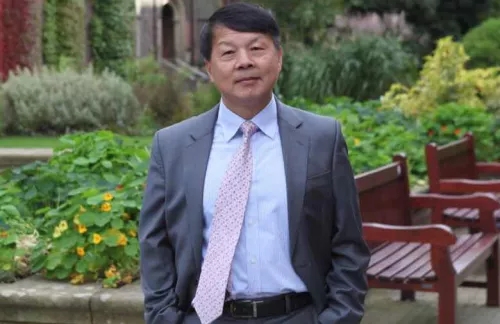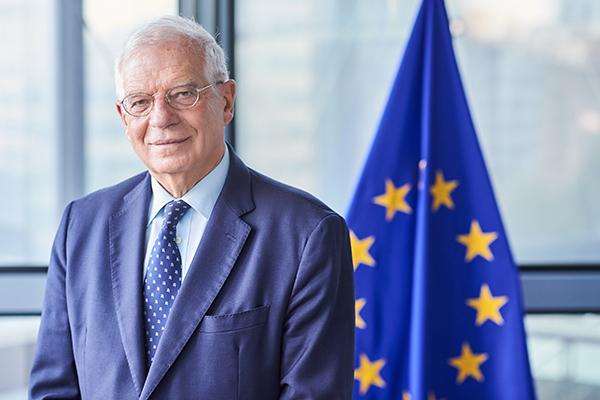Zhou Xiaoming: Trump is shaking down US trade partners
October 10 , 2025
By Zhou Xiaoming | Senior fellow at the Center for China and Globalization(CCG), Former Deputy Permanent Representative of China’s Mission to the UN Office in Geneva.
In what Martin Wolf at the Financial Times called “pure gangsterism”, US President Donald Trump has extracted pledged investments of at least US$1.5 trillion from America’s trading partners. This amounts to the Marshall Plan in reverse.
The scheme Washington initiated in 1947 essentially provided economic aid to Europe and later Japan. Of the US$13 billion provided, 90 per cent were grants. But in the US-Japan trade deal, seen as a political trophy for Trump, money will flow in the other direction: Tokyo has pledged an investment of US$550 billion.
Japan is being pressured to divert capital that is needed at home to the United States. So, it seems, is the European Union, which has agreed to invest US$600 billion, and South Korea, which has pledged US$350 billion in investments. Together, these economies are expected to transfer massive amounts of financial resources to the world’s richest country.
While the Marshall Plan was seen as the most notable economic assistance programme in the history of the West, Trump’s capital transfer scheme may well be remembered as the largest flow of free capital to any country the world has ever witnessed. America’s role has thus undergone an about-face: from aid provider to aid recipient.
The Marshall Plan emphasised European ownership of planning – although Washington had approval authority, Europe’s governments set the priorities, and all programmes and projects came from them. But, as is emerging with the US deal with Japan, Trump is demanding that the projects be driven by his administration’s priorities and that he review the investments. Tokyo may refuse at the pain of additional tariffs.
While negotiations are ongoing, they set a disturbing precedent for South Korea, the EU and all other US trading partners that have pledged investments.
In addition, the US is demanding a much larger chunk of the profits from Japan. According to Commerce Secretary Howard Lutnick, the US wants 50 per cent of profits before the investment is recouped and 90 per cent afterwards – the same terms have reportedly been presented to South Korea.
Yet Uncle Sam runs no investment risk. It will neither contribute financially to projects nor be obliged to bear any losses. This looks like plunder, plain and simple.
Compare this to the Marshall Plan, which at least bore a philanthropic spirit of sorts. It was instrumental in getting war-devastated western Europe back on its feet and kick-started a process of rehabilitation and growth, enabling economic success in much of the continent.
While White House spokesman Kush Desai has declared that Japan’s pledged investments “will be key to fuelling America’s next Golden Age”, Trump’s capital transfer scheme aims to boost strategic American manufacturing at the cost of a potentially unbearable economic burden and loss to Japan.
At US$550 billion, the trade deal dwarfs Japan’s current annual direct investment into the US. And, as the US siphons huge sums from Japan, questions are likely to be raised, if the money could be better aligned with Japan’s strategic interests. One thing is for sure though: there will be a further hollowing out of the Japanese economy while its economic dependence on the US is exacerbated.
The same fate awaits South Korea. US trade negotiators are pushing Seoul to accept a “Japan-style” deal. What is more, Trump has demanded the US$350 billion investment pledge be provided “upfront” – which Seoul has rejected outright as simply impossible. At US$350 billion, the sum is bigger than South Korea’s foreign direct investments (FDI) over the past five years – and about US$100 billion more than South Korea’s cumulative FDI in the US.
Putting it all upfront in cash would mean draining 80 per cent of the country’s foreign exchange reserves – South Korean President Lee Jae-myung has warned that this could trigger an economic crisis rivalling the meltdown in the 1997 Asian financial crisis, when South Koreans donated their gold jewellery to help pay off the country’s debt.
Unlike Trump’s capital transfer scheme, the Marshall Plan was ideologically driven, focusing on America’s long-term geopolitical interests. Its strategic intent was to contain Soviet influence by stabilising western Europe and building alliances. The plan was also designed to work with America’s productive capacity – the US was producing more than half the world’s manufactured goods.
To this end, the bulk of the financing was tied to purchases of US goods and services. The plan also stressed policy reforms such as the removal of trade barriers, paving the way for US companies to break into new markets and expand.
In contrast, Trump’s scheme prioritises short-term financial returns in its aim to rebuild the US manufacturing sector. In the hot pursuit of economic benefits, geopolitics has largely been forgotten and allies are increasingly left to languish.
The divergence mirrors the changed times. The US emerged from World War II as the undisputed global power. Its economy churned out half the global output. Uncle Sam was ambitious and aggressive. Fast forward to the 2020s and Washington now finds itself unable to do things abroad that it used to do, and lives in constant fear of being toppled as the global hegemon. Mass infusions of capital are seen as critical to revive the good old days.
In spite of all this, the two schemes do have one thing in common: Washington’s ultimate goal, then as now, is the maintenance of US hegemony. But given how times have changed, how likely is it that America will make itself great again?
From SCMP, 2025-8-29
Topical News See more






